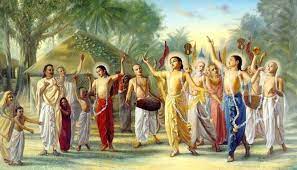How India Lost Its Shining Brand
Consistent image of India, across the world, across millennia, had been one of a land of prosperity as we have seen. It had been a land that had been continuously prosperous from the very memory of mankind.
All this turned upside down in the 350 year of colonial rule, from when it acquired an image of a land of poverty. All this poverty and impoverishment is only relatively recent in the last couple of centuries.
ACCOUNTS OF WITNESSES TO THE LOSS
A Grand Old Man’s Verdict
The observation of Sir. Dadabhai Naoroji, a member of the House of Commons, London and later, a founding figure of the Congress movement for freedom struggle of India, drives home this point further.
Sir. Dadabhai Naoroji, called the Grand Old Man of India, who lived between 1825 -1917, studied the state of India under the British for 50 years, from 1867 to 1917 and delivered many speeches and wrote many essays and books.
In one such book, “Poverty and Un-British Rule in India“, giving detailed values to the plunder, he highlights how:
* The British rule was the greatest curse with which India has been afflicted From the richest country in the world it made India the poorest country in the civilized world
* It was continuous impoverishment and exhaustion of the country
* This drain of wealth from India was the principle and basic cause of the poverty of
the people
A Visitor’s Unavoidable Remark
It is this plunder, which made Robert Montgomery Martin, a historian and a visitor to Eastern India in 1835, remark,
“It is impossible to avoid remarking 2 facts as peculiarly striking –
1st, the richness of the country,
2nd, the poverty of its inhabitants.”
Will Durant’s Branding of the British Rule
Will Durant, the great American thinker, branded the British rule of India as “the greatest crime in all history.”
In his book, “The Story of Civilization-Our Oriental Heritage”,Will Durant wrote in 1930:
“I saw such things in India as made me feel that study and writing were frivolous things in the presence of a people one fifth of the human race suffering poverty and oppression bitterer than any to be found elsewhere on earth. I was horrified! I had not thought it possible that any government could allow its subjects to sink to such misery! I was filled with astonishment and indignation at the apparently conscious and deliberate bleeding of India by England throughout a hundred and fifty years!”
De-industrialization of India
Another research was carried out by Prof. David Clingingsmith and prof.Jeffery G.Williamson
“India was a major player in the world export market for textiles in the early 18th century, but by the middle of the 19th century, it had lost all its export market and much of its Dosmestic Market.
‘While India produced about 25% of the world industrial output in 1750, this figure had fallen to only 2% in 1900.”
This is the conclusion that Prof. David Clingingsmith and Prof. Jeffery G. Williamson, of the Harvard University have brought out in their work, India’s De-industrialization in the 18 and 19th century”, which speaks eloquently of the impact of 200 years of British colonial rule in India.
POVERTY STEREOTYPED
Unfortunately , over the last 100 years various articles, reports and books about India have repeatedly described India as a poor country. The images of India that have been flashed across the world showcase poverty.
This has given a common perception to people at large, the world over that, India has always been a poor country, which is why India is categorized as an underdeveloped or developing country.
Fortunately, these stereotypes and nomenclatures have started changing since the last 3 to 4 decades.
But the beggars still continues to haunt India.
3 WAVES OF PLUNDER
The economic history of India, of the last millennium, from 1000CE, can be slotted into three waves of plunders.
* Plunders from the Near West between 1000 CE and 1600 CE
* Plunders from the Far West, the colonizers, between 1600 CE and 1947 CE.
* Plunders by Indians themselves, from 1950 CE onwards.
While Sir.Dadabhai Naoroji cites the plunder by the British as the main cause for India’s poverty, much of India had already been through a few plunders between 1000 CE and 1600 CE. These were the plunders from the Near West.
After Sir. Dadabhai Naoroji and the British times, we find that India is still being plundered. This time by its own citizens through a new form of plunder called “Corruption”.
But aren’t we missing to read what lies between these lines and the plunders?
Are we not failing to realize that between each of these waves, there had also been a period of resurgence, as otherwise there could not have been wealth generated, for it to be plundered again and again?





